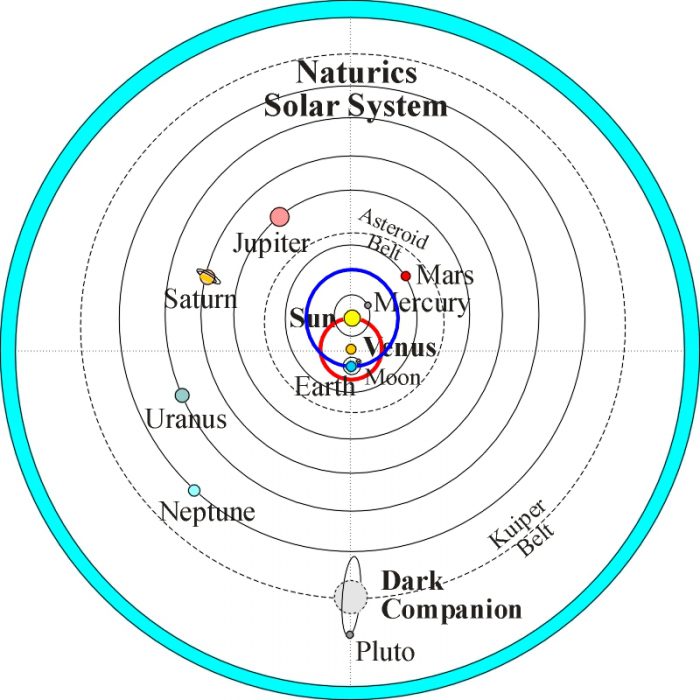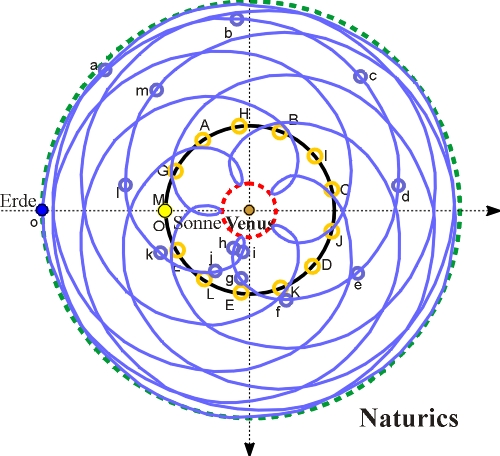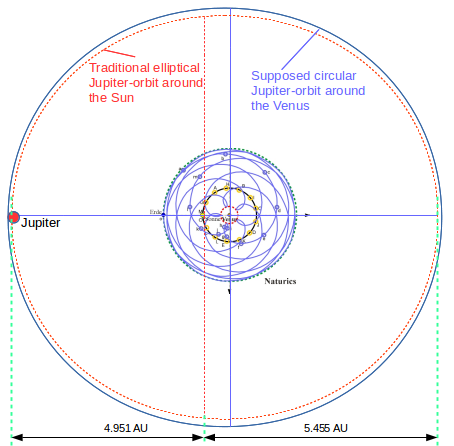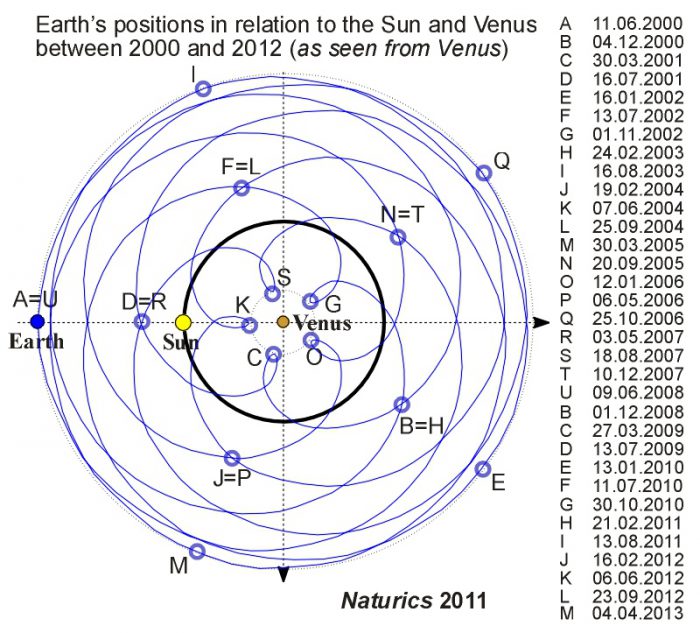In our new model of the Solar System, the fragmented mass of the former Andrea-Star moves around the centre of mass of the entire Solar System in Venus once every 247 years.

But all eight "planets" of our today's Solar System planets must also move simultaneously around this centre of mass and around the Sun (the most massive member of the system). In the case of Earth, which is closest to Venus, this creates a rosette-shaped orbit, as shown in the sketch below.

Within a period of almost eight years, the Earth comes very close to Venus five times (note the red circle) and moves maximally away from it also five times (the green circle). During this time, the Sun "dances" around Venus thirteen times (on the black circle). The distance of the Earth from the Sun always remains the same during the whole period of eight years, namely 1 AU, an astronomical unit. You can see this on the sketch if you compare the distances of the Earth's positions (the small blue circles, marked with the small letters a to o) with the corresponding positions of the Sun (the slightly larger yellow circles, marked with the corresponding letters A to O).
But also the five other (traditional) planets, which are further away from Venus than the Earth, must orbit both masses at the same time. Our present, seventh observation proposal concerns Jupiter in this respect, because it is the largest of all the planets. It is known that Jupiter's greatest distance from the Sun is 5,455 AU, and its smallest distance is 4,951 AU. In traditional astrophysics, it is tacitly taken for granted that the planets do not move on circles but on ellipses around the Sun. Such an elliptical orbit of Jupiter around the Sun is coloured red on the sketch below. On the same sketch, however, we have also included our Naturics orbit of the Earth around the Sun and Venus. In our model it is obvious that Jupiter can be closest to the Sun when the Sun is between it and Venus. And conversely, Jupiter "must" be farthest from the Sun when Venus (the true centre of mass of the Solar System) is between it and the Sun.

The observational suggestion is this. One should be able to measure the small but visible difference between Jupiter's elliptical (red) traditional orbit and its blue (more circular) orbit with today's observation technology. Just as the Earth's positions in its rosette orbit can actually be observed; compare the list of such positions between the years 2000 and 2012 on the sketch below.

The Earth is actually moving around the Sun and Venus at the same time on this beautiful rosette, and not just so boringly on an ellipse, which traditional astrophysics would have us believe. But it is not just a matter of aesthetics. The passages through the "kink points" (C, G, K, O, S) of the rosette are the dangerous times for us on the Earth's surface, because of the earthquakes that occur particularly frequently at these points when the Earth is decelerating and accelerating. A smooth ellipse, on the other hand, gives no explanation for this phenomenon.